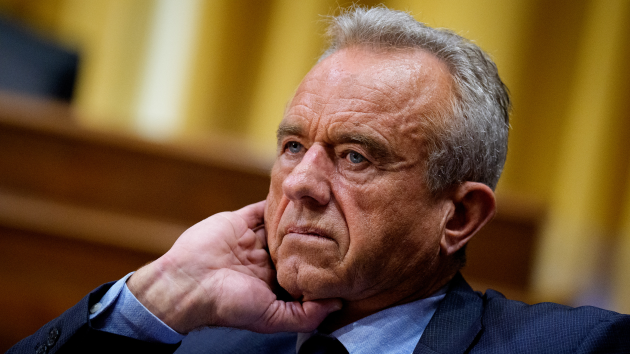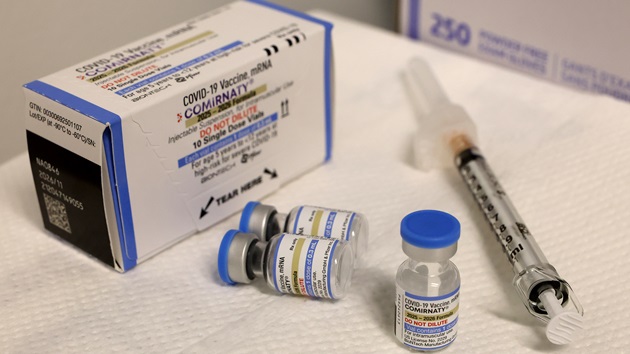Later school start times eyed to address youth mental health crisis
Written by luck on April 4, 2022

(NEW YORK) — California was the first state to mandate that high schools start no earlier than 8:30 a.m. Pediatrician Dr. Bert Mandelbaum hopes New Jersey will be the second.
New Jersey is one of several states exploring later school start times, as educators and health professionals grapple with concerns about the pandemic’s impact on youth’s mental health.
“I think we’re at the right time that people are willing to listen and do the right thing for kids,” Mandelbaum, who chairs the American Academy of Pediatrics New Jersey chapter’s Task Force on Adolescent Sleep & School Start Times, told ABC News. “I think the pandemic heightened everyone’s awareness of the mental health needs.”
The task force has advocated for later start times for several years as a way to promote healthy sleep habits among adolescents, though Mandelbaum believes the pandemic’s toll helped lead to state lawmakers last month introducing legislation that proposes pushing statewide high school start times in New Jersey to no earlier than 8.30 a.m., starting in the 2024-2025 school year. State Democrats said the bill was “beginning the work of addressing this national youth mental health crisis.”
At a ‘tipping point’
Other states that have introduced similar bills during the pandemic include New York, where the proposal is at the committee level, and Tennessee, where it’s been referred to summer study. The Tennessee AAP chapter voiced its support for the bill amid a “national emergency in children’s mental health.”
Several school districts are also shifting to later start times, including Denver and Philadelphia.
“I feel like we have reached a tipping point,” Phyllis Payne, implementation director for Start School Later, an organization that advocates for later school start times, told ABC News.
The AAP, the Centers for Disease Control and Prevention and the American Academy of Sleep Medicine are among several health authorities that support later start times to allow students to get optimal sleep — which for teenagers is between 8 and 10 hours a night.
The CDC has found that most middle and high school students don’t get enough sleep, making them more likely to have poor school performance, engage in unhealthy risk behaviors and suffer from depressive symptoms, it said.
Later school start times would better align with adolescents’ biological sleep rhythms, which cause them to go to bed later, experts say.
Research has found that in high schools with delayed start times, from 8:30 a.m. on, students got more sleep, academic outcomes and attendance rates improved, and car crashes involving teen drivers decreased.
“A lot of high schools start at 7 a.m. or 7:30 — that puts these kids in this really terrible position,” Kimberly Fenn, an associate professor of psychology and director of the Sleep and Learning Lab at Michigan State University, told ABC News. “Any amount they can shift back is going to benefit the students.”
Early start times also often limit light exposure in the morning, which can have an impact on student learning, according to Rebecca Spencer, an associate professor of psychological and brain sciences at the University of Massachusetts Amherst.
“When we’re instead waking up to darkness, we lack that external alerting signal, that bright light that it takes to signal it is time to be awake and helps you focus,” Spencer told ABC News. “So if you take that away from kids, it presents as grogginess and inattentiveness, but it has broad ramifications. It’s gonna tell you how they’re going to perform cognitively. It’s gonna tell you how their behavior is going to be, behavior and mood in the classroom.”
For this reason, among others, many sleep experts have spoken out against a potential move to permanent daylight saving time, which Congress is currently considering instead of changing the clocks twice a year.
“My guess is that sleep scientists as a whole would say, OK, we should stop the bouncing back and forth. But going with standard time, from a sleep perspective, is the better way to go so that you have that light in the morning more often,” Spencer said. “That helps their cognitive function.”
‘Change is challenging’
The Edina School District was the first district in the U.S. to change to a later starting time for their high school, shifting from 7:20 am. to 8:30 a.m. in the 1996-1997 school year, according to research from the University of Minnesota.
Since then other school districts throughout the country have made similar shifts, though advocates for later start times believe tackling the issue at the state level will help address logistical concerns around making the move, such as for parents’ work schedules and programming school athletics.
“I think that we are at a point now where we’re recognizing that this really is the right thing to do,” Payne said. “But change is challenging. People don’t like change.”
The California School Boards Association had opposed California’s law due to logistical concerns for families when it passed in 2019. Ahead of the state’s shift to a later school start time, which goes into effect in July, one teacher argued in CalMatters that the policy is a “disaster in the making” for an already overwhelmed education system. In response, a physician specializing in sleep medicine and an advocate for student health argued that the shift “has never been more urgent” due to the pandemic’s toll on youth mental health.
Mandelbaum, who said he got involved in advocating for later school start times to promote the science behind the policy, has only heard of one instance where a school district that made the shift reverted to its old, earlier schedule. But it “failed because of poor implementation” — highlighting the need for all stakeholders to be involved early on in the proposal process, he said.
For Mandelbaum, the pandemic has shown that schools can adapt quickly to change.
“Schools went virtual within a weekend,” he said. “The idea that we can do big things is there.”
Copyright © 2022, ABC Audio. All rights reserved.





